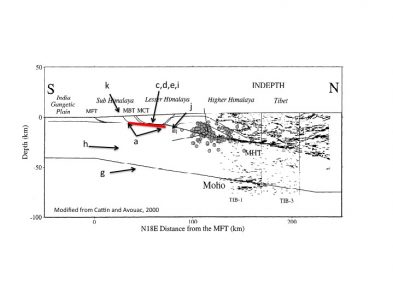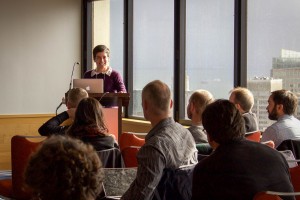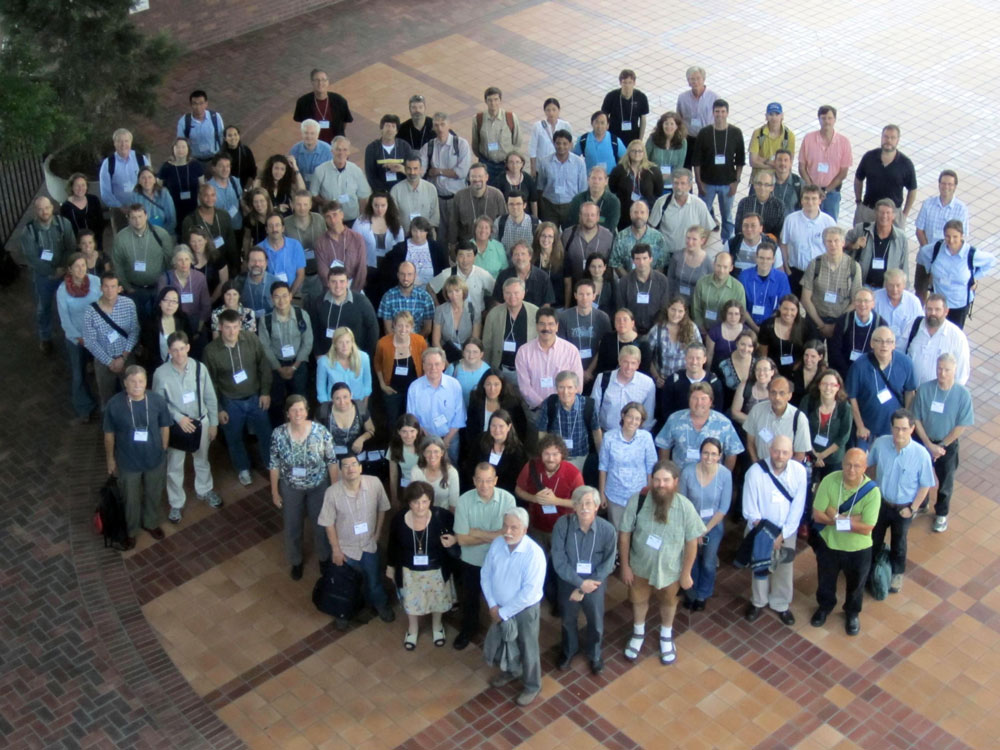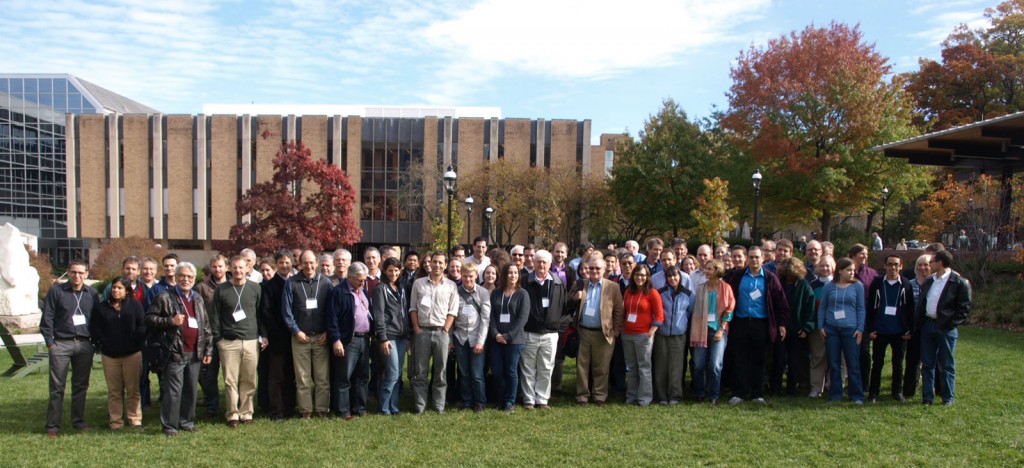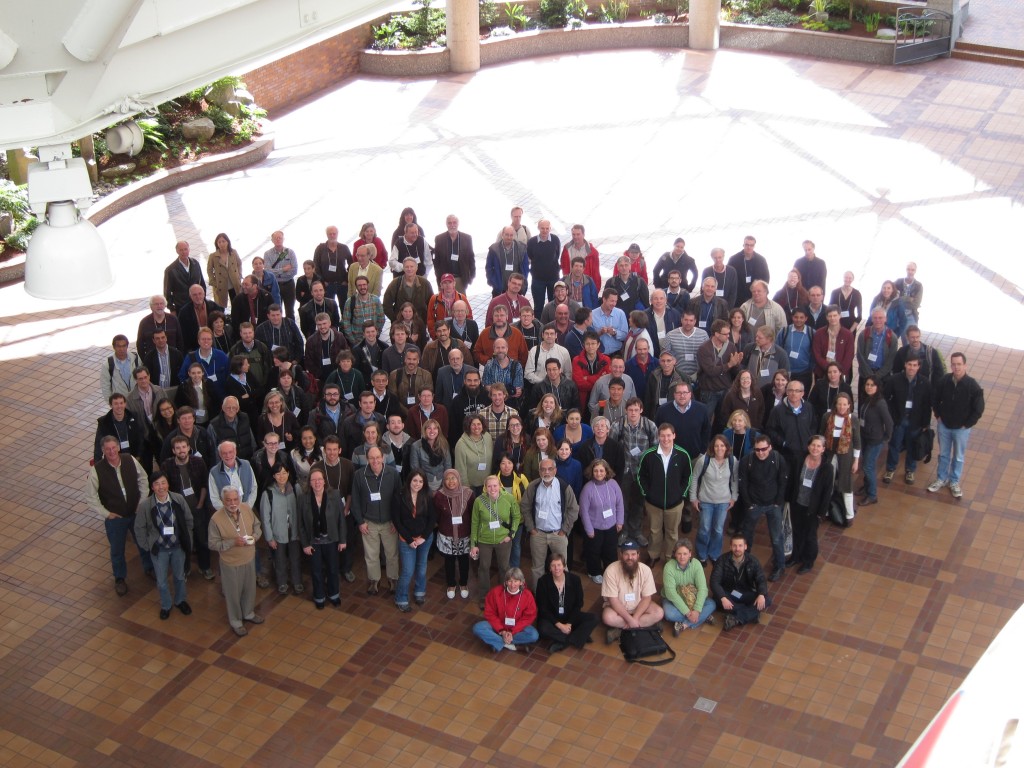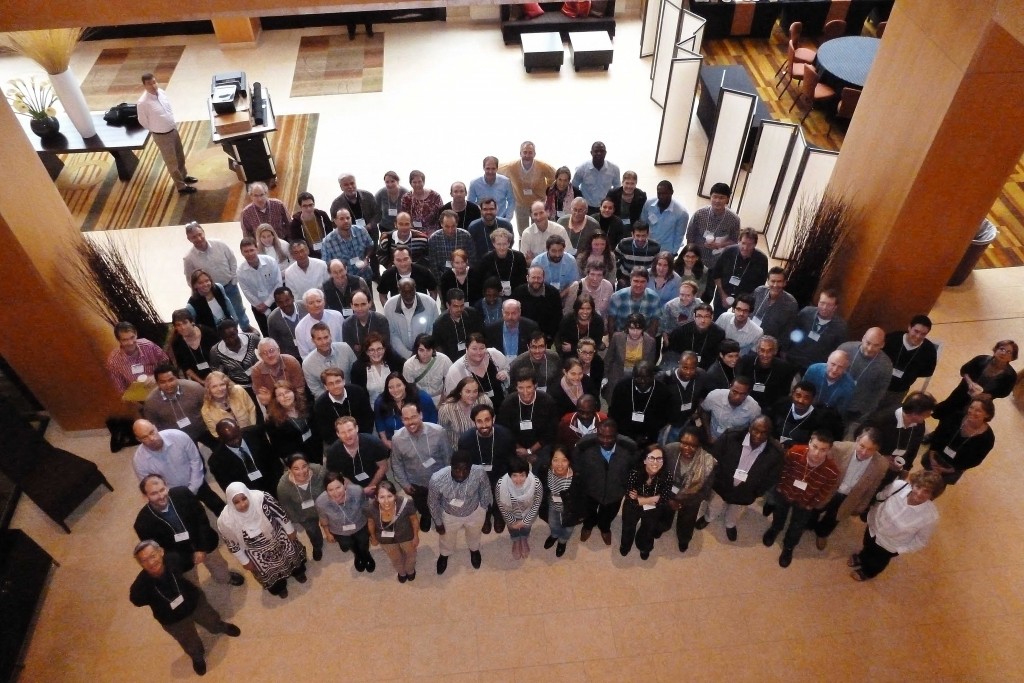The Theoretical and Experimental Institute (TEI) for the Rift Initiation and Evolution (RIE) initiative is now open for applications. The TEI will be held over three full days from February 8-10, 2017 and is intended to summarize progress and recent scientific advances related to the RIE initiative, and to identify high-priority science for future GeoPRISMS RIE efforts. (Please see the Science and Implementation Plan). Applicants do not need to have worked on projects funded by GeoPRISMS. We expect a broad and diverse audience drawn from domestic and international research communities, including graduate students and early career scientists, who are interested in the initiation and evolution of rifts.
Funding
The TEI is funded by the National Science Foundation through the GeoPRISMS Office at The Pennsylvania State University. There is no registration fee. We will be able to cover most on-site expenses (venue costs, hotel expenses based on double occupancy, and breakfast & lunch) for approximately 80 participants. Most participants will have to cover their travel to and from the meeting; partial funding for travel is available for students and postdocs. We will not be able to provide dinners on-site, but there are several restaurants nearby. Confirmed participants whose on-site expenses are covered are expected to arrive on Tuesday evening and leave on Saturday morning.
Organizing Committee
Ex officio: Demian Saffer (GeoPRISMS Office/Pennsylvania State University)
Important Dates
October 4: Applications are opened
November 21: Application deadline
December 9: Successful applicants are invited to confirm participation
December 22: Deadline for confirmation of attendance
Late January: Final meeting agenda is released
Feb 7 – Student and Postdoc Symposium
(Alvarado Ballroom A+B)
1:00: Welcome & overview of GeoPRISMS and NSF – Demian Saffer (PSU) and Jennifer Wade (NSF)
1:30: Overview of RIE science questions – James Muirhead (Syracuse) and Yelebe Birhanu (Bristol)
2:00: 1 min, 1 slide pop ups on research related to RIE (part 1)
2:30: Career opportunities panel
3:00: Coffee break
3:15: 1 min, 1 slide pop ups on research related to RIE (part 2)
3:45: Group discussion
5:00: Concluding remarks
5:00-7:00: Ice breaker and student & postdoc posters
Feb 8 – Day 1
7:00 Breakfast (Franciscan Ballroom)
8:00 Welcome from GeoPRISMS Office & NSF | Demian Saffer and Jennifer Wade (Alvarado Ballrooms D & E)
8:15 Introduction to the RIE TEI | Tobias Fischer (UNM) and Donna Shillington (LDEO)
8:30 Session 1 | Rift evolution from initiation to post rift architecture
- A brief history of ideas about rifting and the controversial role of magma in rift initiation | Roger Buck (LDEO) – Keynote (20 min)
- Controls on continental rifting processes from geophysical observations at mature margins | Harm Van Avendonk (UTIG) – Keynote (20 min)
- The interplay between morphodynamics and substrate fluid flow– An examination of active processes along passive margins | Danny Brothers (USGS) – Keynote (20 min)
- Panel discussion with moderator – 30 min
10:00 Break
10:30 Session 2 | Geodynamics
- Geodynamic models of rifting | Jolante Van Wijk (New Mexico Tech) – Keynote (20 min)
- The Woodlark Rift: a case study in young continental breakup | Zach Eilon (Brown) – 15 min
- Mineral-scale constraints on the geodynamics of rifting | Andrew Smye (Penn State) – 15 min
- Results of a high resolution heat flow survey across the Wagner Basin, Gulf of California | Robert Harris (Oregon State U) – 15 min
- Seismic anisotropy across the Eastern North American Margin (ENAM) | Colton Lynner (U. Arizona) – 15 min
- Panel discussion – 20 min
12:10 Lunch (Franciscan)
1:10 Report from Student Symposium and Break out 1 intro (Alvarado Ballroom D & E)
1:30 Break out 1 | Science gaps and priorities (Alvarado Ballrooms A, B, F, D & E, view the break out groups assignment)
2:30 Break
3:00 Session 3 | Magmatism, volcanism and volatile exchanges (Alvarado Ballrooms D & E)
- Origin of rift magmatism- overview, tools, wish list | Conny Class (LDEO) – Keynote (20 min)
- Melting of a deep subcontinental lithospheric mantle during the early stages of rifting | Sara Mana (Salem State University) – 15 min
- Magnetotelluric Imaging in the Ethiopian Rift Valley – Implications for Magma Storage and Pathways | Juliane Huebert (Edinburgh) – 15 min
- Ascent timescales at the Onset of the Oruanui, NZ Supereruption | Madison Myers (UO) – 15 min
- Cenozoic alkaline volcanism associated with the West Antarctic Rift System in North Victoria Land, Antartica | Philip Kyle (NMT) – 15 min
- Panel discussion – 20 min
4:30 Pop Up #1 (give 1 min summaries of posters)
5:00 – Poster/cash bar & Posters
Dinner on your own
Feb 9 – Day 2
7:30 Breakfast (Franciscan)
8:30 Session 4 | Faulting and Strain (Alvarado Ballrooms D & E)
- Recipe for rifting | Cindy Ebinger (Tulane) – Keynote (20 min)
- Variations in faulting in the Gulf of California – Salton trough plate boundary | Paul Umhoefer (Northern Arizona U) – 15 min
- Faulting in the presence of magmatic volatiles during early-stage rifting in East Africa | James Muirhead (Syracuse) – 15 min
- Seismic coupling at divergent plate boundaries from rate-and-state friction | Hannah Mark (WHOI) – 15 min
- Geodetic constraints on crustal deformation in Africa / EAR | Elifuraha Saria (Ardhi) – 15 min
- Panel discussion – 20 min
10:10 Break
10:40 Poster pop ups #2
11:10 Breakout reports & discussion
12:00 Lunch (Franciscan)
1:00 Session 5 | Surface processes and feedbacks with lithospheric processes
- Lost in translation: Defining thresholds for signal storage in landscapes and stratigraphy | Kyle Straub (Tulane) – Keynote 20 min
- The role of surface processes in stabilizing half-graben structures | Jean-Arthur Olive (LDEO) – 15 min
- Stratigraphic record of rift development at the Ledi-Geraru paleontological site, Afar, Ethiopia | Erin DiMaggio (Penn State) – 15 min
- The effects of rapid sedimentation upon continental breakup: Seismic imaging and thermal modeling of the Salton Trough, Southern California | Liang Han (UTIG) – 15 mins
- Rift tectonics and sedimentation: Insights from an onshore-offshore synthesis of the Corinth Rift, Greece | Rob Gawthorpe (Bergen / CSM) – 15 min
- Panel discussion – 20 min
2:40 Break
3:00 Poster session
5:00 cash bar
7:00 Conference Dinner (Alvarado Ballroom E)
8:00 – 8:30 Overview of the Rio Grande Rift (Karl Karlstrom and Laura Crossey, UNM, Alvarado Ballroom E)
Feb 10 – Day 3
7:30 Breakfast (Tablao)
8:30 Session 6 | Hazards at rifts and rifted margins (Alvarado Ballroom D & E)
- Hazards in rifts – An East African perspective | Karen Fontijn (Oxford) – Keynote (20 min)
- Seismic hazard in the East African Rift System (EARS): Challenges on imminent risk mitigation | Atalay Ayele (Addis Ababa U) – 15 min
- Old rift faults never heal: Recent earthquakes of the St. Lawrence PaleoRift System of eastern Canada | Maurice Lamontagne (Geol Survey of Canada) – 15 min
- The formation of backarc basins and potential geohazard issues related with nuclear power plant safety: A case in point from the East Sea/Sea of Japan | Sang Mook Lee (Seoul National University) – 15 min
- Panel discussion – 20 min
10:00 Break
10:30 Session 7 | Collaborative opportunities
- Rift Volcanism: Past, Present and Future | Juliet Biggs (University of Bristol)
- Wide rifting: From tectonics through surface processes, surface and groundwater hydrology to endemic spring biota | Gary Axen (New Mexico Tech)
- EarthScope updates | Donna Shillington (LDEO)
- Africa Array updates | Andrew Nyblade (Penn State)
12:00 Lunch (Alvarado Ballrooms B & C)
1:00 Intro to Breakout 2
1:30 Breakout 2 | High priority data gaps / work needed to address science questions (Alvarado Ballrooms B, C, F, D & E)
2:30 Break
3:00 Short reports of breakout (1 slide one most exciting thing discussed) / Plenary Discussion
5:00 Concluding remarks – Tobias Fischer (UNM) and Donna Shillington (LDEO)
5:30 Meeting adjourns
Feb 11 – Field Trip
8:00 am Breakfast (Fireplace)
9:00 am Board the bus in front of the hotel with your box lunch.
~4:30 pm arrive at hotel.
Upload your pop-up slides before Friday February 3!
On Tuesday before the TEI we will hold a student and postdoc symposium which will feature short presentations by attendees and discussion with the conveners and NSF program managers. The symposium runs from 1:00 – 5:00 and will be followed at 5:00 – 7:00 by student posters and cash bar. We encourage all students and postdocs to attend and to arrange their travel accordingly, after confirmation of attendance.
1:00: Welcome & overview of GeoPRISMS and NSF – Demian Saffer (PSU) and Jennifer Wade (NSF)
1:30: Overview of RIE science questions – James Muirhead (Syracuse) and Yelebe Birhanu (Bristol)
2:00: 1 min, 1 slide pop ups on research related to RIE (part 1)
2:30: Career opportunities panel
3:00: Coffee break
3:15: 1 min, 1 slide pop ups on research related to RIE (part 2)
3:45: Group discussion
5:00: Concluding remarks
5:00-7:00: Ice breaker and student & postdoc posters
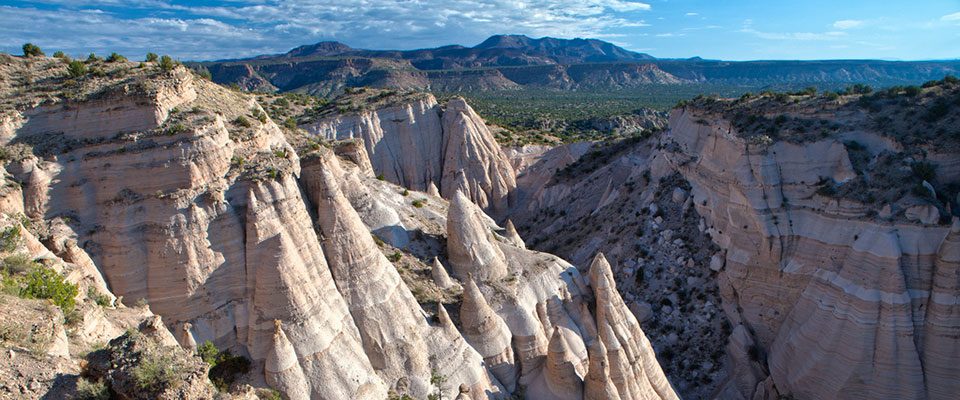
Kasha Katuwe Tent Rocks National Monument, NM. credit: Bureau of Land Management
We will organize an optional field trip to the nearby (~1 hour drive from Albuquerque) Kasha-Katuwe National Monument in the Jemez Volcanic field to look at pyroclastic volcanic deposits and get an overview of the Rio Grande Rift. This trip will involve some light hiking.
Departure: 9:00 am in front of the hotel main entrance.
Return: ~4:30 pm to the hotel
If the conditions allow we will go to Kasha Katuwe (Tent Rocks). If there is too much snow, we will go to an alternative location at lower elevation. The elevation at Kasha Katuwe ranges from 5,500 to 6,700 feet and we will hike to 6,700. It is a nice hike with a great view from the top. We will be in a national monument, so no hammering on rocks or collecting of materials. It can be cold and windy and it can also be very sunny so be prepared for changing weather conditions and wear some layers.
- Agenda (last update 02/06/2017)
- Participant list (last update 02/01/2017)
- Student & Postdoc Symposium Participant list (last update 02/06/2017)
- Poster list & ID numbers (last update 02/06/2017)
- Abstract volume (last update 02/06/2017)
- Participant rooming list (last update 02/01/2017)
- Break out groups assignment (This is for break out session 1: Science gaps and priorities on Day 1. last update 02/01/2017)
- Field guide (last update 02/06/2017)
Meeting venue: The Hotel Albuquerque in Albuquerque, NM




